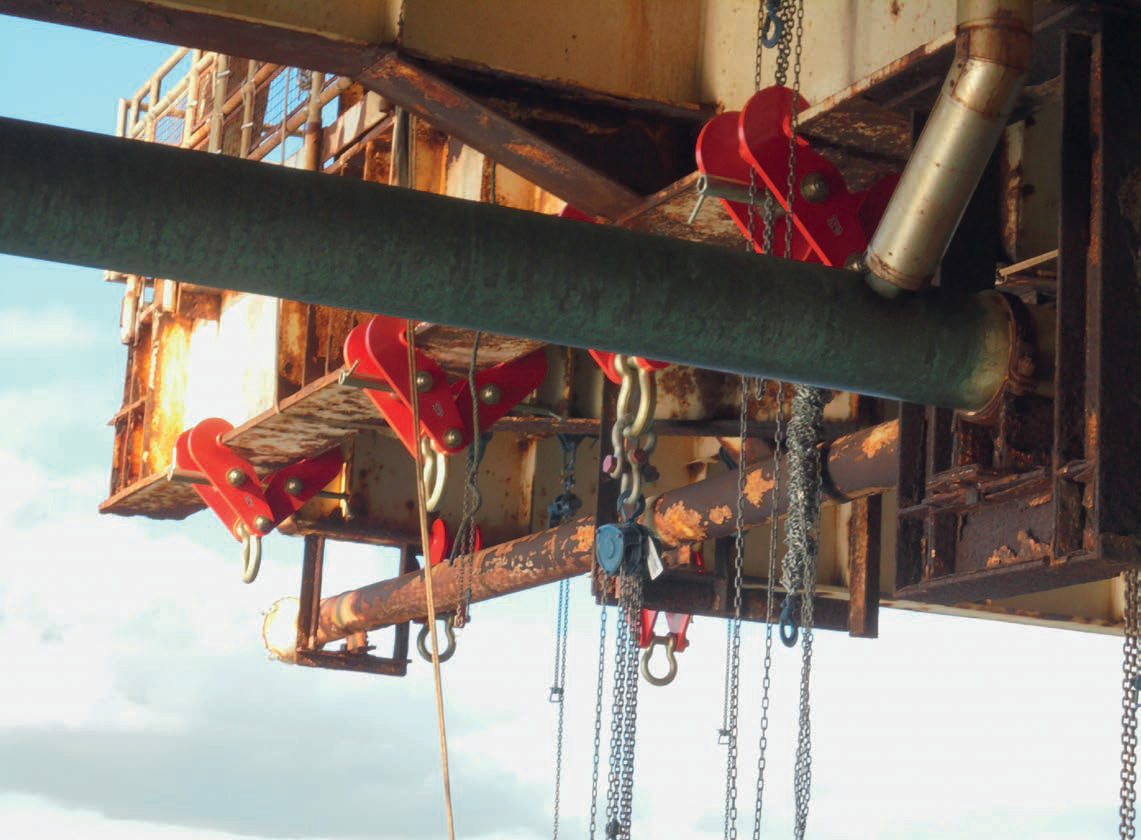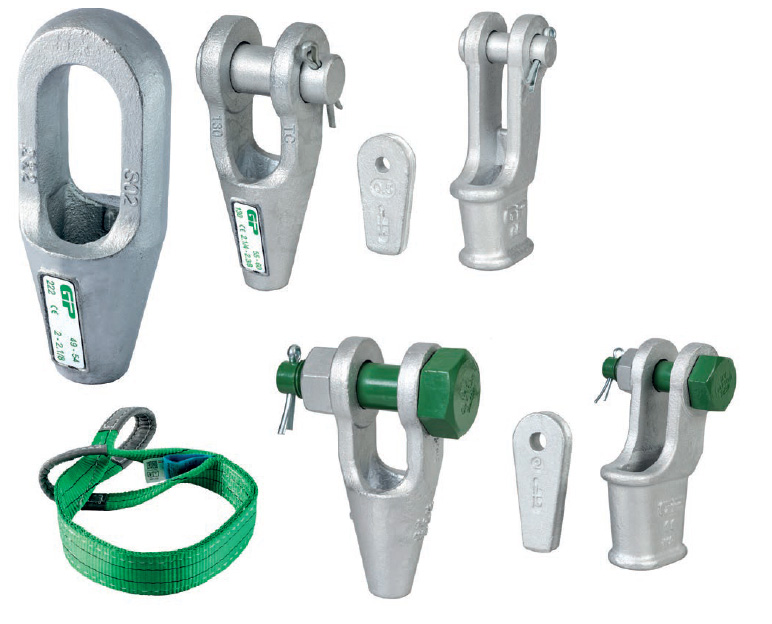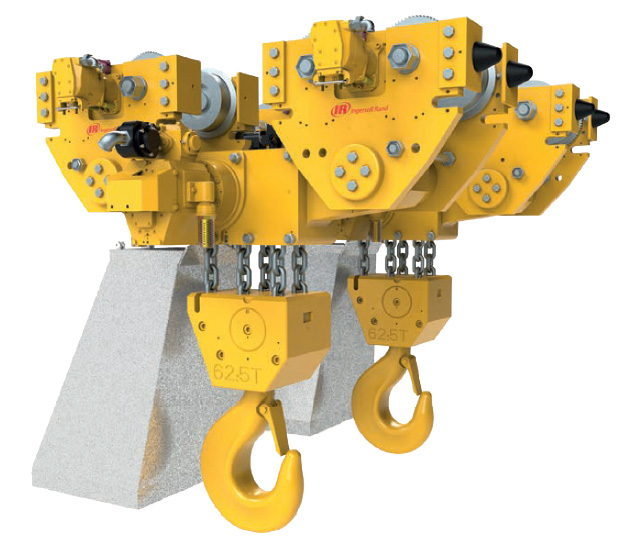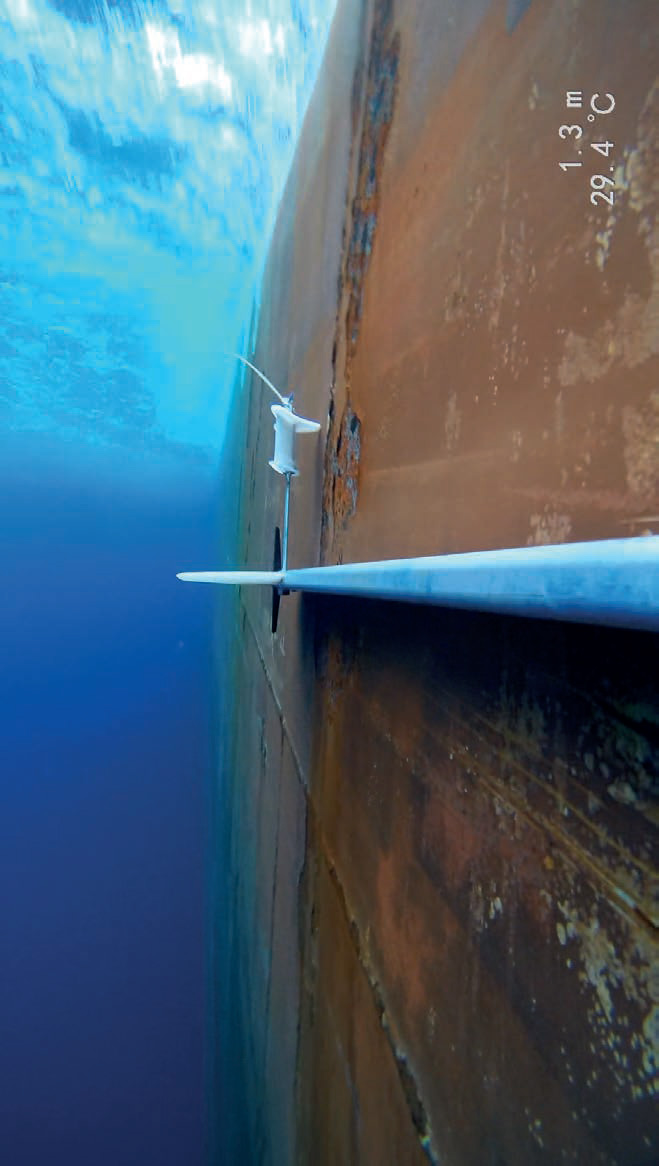In and out of the water
23 April 2021Subsea lifting looks set for a busy summer. Julian Champkin looks at developments.
It is going to be a busy summer in the North Sea,” says Andy Sutherland, technical manager of Northumberland based Tiger Lifting. “We are starting to see companies scrambling for equipment.”
The reason is simple: the Forties pipeline system is shutting down for planned maintenance. The 310-mile long system opened in 1975 and carries around 40% of North Sea oil and gas production.
“The pipeline connects the rigs to the shore, so without it they cannot produce. Rig owners will be using the timeout for their own maintenance, and they will need all the lifting gear that they can find.”
The Forties shutdown, originally scheduled for June 2020, was postponed due to pressure from operators amid the Covid-19 pandemic. But May 27, 2021, is now the firm date for the shutdown to begin, to end on June 16.“
There will be thousands of offshore lifts to be carried out, and there is only so much equipment available in the rental fleet” says Sutherland.
Hoists, clamps, and specialised shackles will all be in demand. Tiger, for example, has its BCU universal clamp, which is designed not only for vertical use but also for side load applications, where conventional clamps are not suitable.
Lifting from offshore rigs is an obvious application - it can eliminate the use of spreader beams in some operations - or it can be used as a semi-permanent anchor point.
Tiger is also known for its manual lever chain hoists, and last year the company launched a new range of its SS hoists.
“The SS range was developed with subsea lifting in mind,” says Sutherland. “Operators offshore were using standard, dry-land hoists and they were experiencing failures, because the hoists were just being used in the wrong environment. Offshore hoists have to resist ingress of foreign particles – sand and so forth; they must be corrosion resistant to salt water; and they must also be able to cope with dynamic loads. When a lifting vessel is bobbing up and down, a rope that is under high tension from the load can suddenly go to having no load on it at all, and the next wave can reverse the situation to several times the static load. So we looked at the failure modes of existing hoists, listened to customers, and developed the true sub-sea lever hoist.”
That was their SS range. Its unique rotational inertia driven torsion switch brake system copes with dynamic loading and counters known failure modes of standard hoists. “The range provides the safest dual brake system,” says Sutherland.
“It means that the lever hoist will raise, hold, and lower the lightest load without slipping.”
This year Tiger relaunched the range with improvements. “We redesigned parts of it by listening to customers,” says Sutherland. “The pinion shaft and disc hub are new, adding more strength and enabling quicker and easier maintenance. We have a brand-new custom in-house paint coating that meets all the requirements of ISO 12944 to the classification of C5M for marine use, which gives excellent corrosion protection and high impact protection. The range can be supplied ATEX compliant, with moving parts copper-plated to avoid causing sparks. It has completed thousands of hours at work.”
The offshore industry, he says, is busy at the moment not just in the North Sea but worldwide. “Globally, there are oil finds off Venezuela and Guyana; in the Middle East the Qatar blockade has been lifted – we shall see how that plays out. And windfarms are being built everywhere – that is another challenge as technology changes and moves. We are at the forefront of R&D for the industry in lifting equipment for constructing and maintaining them. Green energy is already a large part of our structure, and another off-shore renewable source, wave-power, although not yet as developed as windfarms, will certainly come.”
Ingersoll Rand is noticing increased demand for cold-weather equipment in the offshore market. “We are seeing an extremely high rate of inquiries for very low temperature applications,” says their North American commercial leader Mark Koski. “We have seen demand from Arctic regions, Northern Russia, Canada and Alaska; we have supplied equipment to operate down to minus 45 degrees. Safety factors of course have to stay the same no matter what the environment; our hoists have 100% duty ratings, so they can operate continuously, as long as hydraulic power is there.”
An example is their Liftchain Blowout preventer (BOP) handling system. It can be supplied, air-powered in 25-75t capacities and in 25-200t capacities with hydraulic power. The articulated trolley on the Ingersoll Rand Hercu-Link BOP Handling System allows up to 20 degrees of side pulling operation.
“People are coming to us when they can’t work out how to build and design these specialist systems for extreme environmental duty cycle applications,” says Koski, “and that is where we are seeing a major uptick.
“Another trend that we are seeing is electric or hydraulic power replacing air – and that is throughout the offshore and subsea areas, and on-shore, in mining for example, as well. It used to be that no-one wanted electricity in wet or damp conditions or close to hazardous locations, but technology has advanced so much that now they want to do away with compressed air. The reasons are many. Emissions control is one: electric is cleaner for the environment. Frequently also the hoists and winches were the only equipment using compressed air, so that demanded a compressor, expensive to buy and needing time to maintain, just to run them, and a bulky air-pipe from compressor to winches as well, taking up unnecessary effort in laying it and space when it is laid. So for financial reasons they want to get rid of that extra equipment. It saves maintenance money and capital money, and reduces emissions as well, so it is a double or triple win.”
Underwater, the story is the same: “Pneumatic motors release bubbles into the water that can stop you seeing what is going on; hydraulic power makes no bubbles. That is the direction the industry is moving,” says Koski.
Gus Caldera is global Leader of business development at Ingersoll Rand. “Sticking with the offshore specialty we have new capacity ranges,” he says. “We have launched a 125t capacity system, which is a niche that was not previously catered for in the industry. Capacities typically jumped from 100t to 150t or higher, so we have filled that gap that customers were needing.
“Another real change we are seeing is the spread of underwater clients and applications; it is no longer only the oil and gas industries that we can help. For example, the US navy has asked us to create a custom underwater hydraulic hoist for them, and we got their permission to commercialise it, so now it is a regular offering from us, available to any client.
“Several other organisations have also been coming to us and asking us to help them design products that are not typical, not off-the-shelf. We are seeing a lot of that, and we welcome it. It is challenging for our engineers, it is rewarding when you have done it – and as well as that, I personally find it fun.”
“Those special projects, custom-built as special orders, commonly then become a standard offering, as in the US Navy case,” says Koski. “Once one of these pieces of equipment is out there other applications appear that we can solve with the same units. Customers discover that there is a way of doing what they need to do with one of these products. That was the case with our Manrider winches. Twenty years ago they were a special request from a customer who needed a safe way for offshore rig engineers to work at height; now they are a standard product. That is how a lot of our products today started.”
Green Pin has long been known for its specialised shackles and lifting ancilliaries for offshore and sub-sea applications. Its latest developments are in sockets for rope endings. “Anchoring pipes and oil platforms, towing cables and other heavyduty applications require the sturdiest and most longlasting solutions,” says marketing coordinator Sandy Boelsums, Van Beest.
“Green Pin sockets are made of high-tensile galvanized steel for long term durability as well as flexibility and safety.” They, too, have found demand for extreme-temperature equipment: “Importantly we have now extended the safe working temperature range. Operation is now guaranteed across a temperature range from -40°C up to +200°C (-40°F up to +392°F) for permanent and for temporary fixtures,” adds Boelsums.
Closed Spelter, Open Spelter and Open Wedge sockets are all available for in-line use. The range comes with a wide variety of certifications and CAD drawings for use in lifting plans. New markings have been added to the spelter sockets which are easier to read, and which will remain so even when the product has been used or submerged for some time.
“This avoids misjudgement or miscalculation and ensures greater safety,” says Boelsums. “Among other benefits the socket now clearly shows which steel wire diameter it can be used with, in mm as well as in inches. End fittings can be cotter pin or safety bolt. They are the strongest, most enduring way to fasten steel wire rope end fittings. They all maintain the minimum breaking load of wire ropes if installed properly.”
The sea is an unforgiving environment that does not allow liberties. Equipment makers have long been aware of that and have taken it into account.



